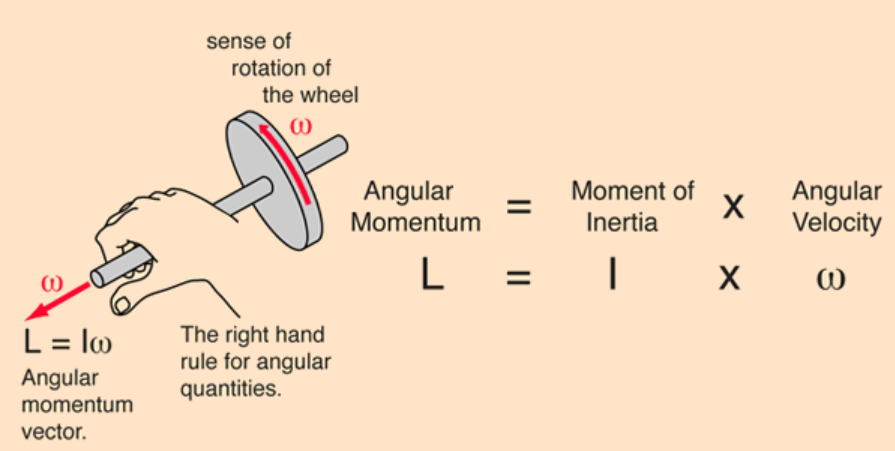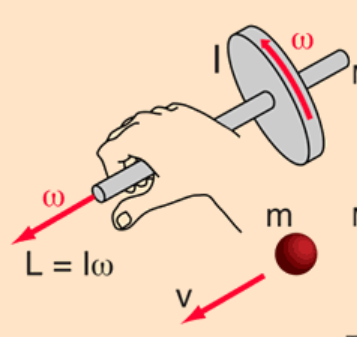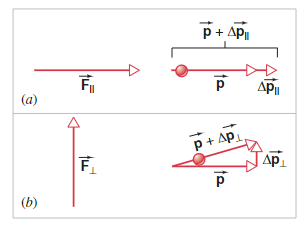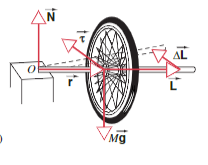Angular momentum
We can also write this using Rotational Inertia and Angular Velocity.
Newton’s Law can be written as
Similarly:
We can derive this:
The analogy from translational to rotational carries over in other ways.
To specify direction for

We can compare this to linear momentum:

Suppose we have a force
When

A similar phenomenon occurs for rotational movement. When
Using this principle, we can show an interesting phenomena:

Because the torque of the wheel is perpendicular to the angular momentum, the axle moves.
There is also a law for Conservation of Angular Momentum where
For Conservation of Angular Momentum to be sustained, net Torque must stay the same, but the Force does not. The object can undergo translational motion without introducing an outside torque to the object.